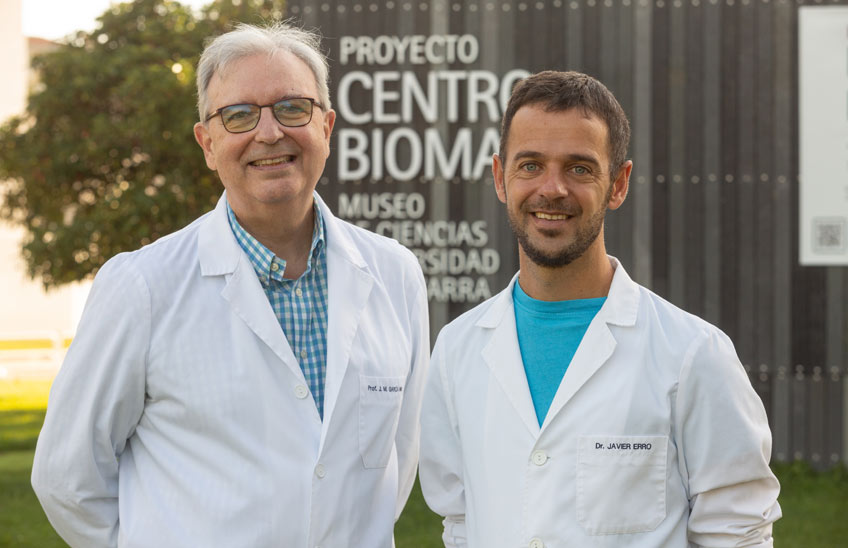Researchers from the University's Biodiversity and Environment Institute , Magna and Emgrisa create a decontaminant that irreversibly eliminates Lindane.
The compound created is simple, efficient, sustainable, economically viable and can be applied directly to soils.

PhotoManuelCastells
/José María García-Mina and Javier Erro, principal investigators of project.
10 | 10 | 2023
A group of researchers from the Biodiversity and Environment Institute of the University of Navarra, Magna and Emgrisa have created a compound that facilitates the elimination of Lindane from landfills. Thanks to this research the compound can be used directly on soils to irreversibly decontaminate the affected area.
"We have created a compound with micropores that is particularly absorbent in a reducing and alkaline atmosphere, and we have combined two complementary mechanisms of destruction Chemistry of Lindane. The final product is economically viable, simple in its composition, includes raw materials from Economics circular and is highly effective," says Javier Erro, researcher of Biodiversity and Environment Institute of the University of Navarra.
This work, which has been published in the international Journal of Environmental Management, is the result of a four-year project which has been partially funded by the Government of Navarra at framework of project "Polyvalent decontaminants (heavy metals and organic pollutants) for the regeneration and/or protection of soils and the environment".
The main novelties of this research are the direct application of the decontaminant to the affected soil - avoiding isolating the contaminated land -; the effectiveness of its application, since it has been demonstrated that more than 90% of high concentrations of Lindane are eliminated in a short time and in an irreversible manner; and the polysorbent capacity of the product, which allows the recovery of soil contaminated by any organic or inorganic compound, as in the case of heavy metals.
For this research the synthesis, structural characterization and mechanism of action of the proposed product have been carried out, and it has been tested both at laboratory and at the Bailín landfill in Sabiñánigo (Huesca).
For Erro there is still room for improvement in this research from a technological point of view and the main challenge could be "to achieve a homogeneous mixture between the product and the contaminated soil that allows an intimate contact between Lindane and the decontaminant".
According to researcher, Lindane is a toxic, persistent and bioaccumulative product that was used as a pesticide for many years. This product has been banned since 2008 in the European Union - for causing damage to the environment and human health - and since 2015 it has been declared a carcinogen by the World Health Organization.
reference letter bibliographic
→ Erro, J., Martínez-Pérez, J. M., Contreras, M. G., Márquez, R. L., & García-Mina, J. M. (2023). MgO-mediated activation of active carbon as an affordable strategy to "in situ" degradation of lindane in contaminated soils. Journal of Environmental Management, 344, 118476.




